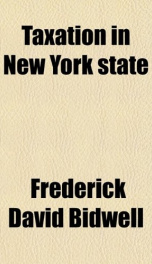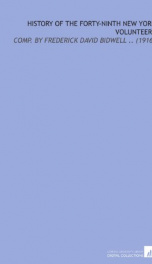taxation in new york state

Purchase of this book includes free trial access to www.million-books.com where you can read more than a million books for free. This is an OCR edition with typos. Excerpt from book: CHAPTER III EARLY SOURCES OF STATE REVENUE The General Fund in 1789 consisted of the State lands, a considerable amount of cash and securities acquired thru the operation of the Funding Act of Congress, and the ordinary revenues. It was expected that the annual revenue would be more than sufficient to pay all the ordinary expenses of the government for many years. Unfortunately, however, the fund was so badly managed that by 1835 'Governor Marcy in his annual message to the Legislature stated that the general fund had been reduced below two hundred thousand dollars. SALE OF PUBLIC LANDS During the years 1790 to 1795 the proceeds from the sale of public lands amounted to fifty per cent of the entire State revenue. The greatest amount received in any one year was in 1792, when three hundred and twenty-five thousand dollars was received out of a total revenue of $595,500. It was thought that a fund would accumulate from this source which would relieve the people of the burdens of taxation for the support of the government. No such fund, however, was allowed to accumulate. In colonial days lands were generally granted with the reservation of a certain rent to be paid annually either in money or kind. The rates in 1678 were from $0.40 to $1.50 "(30d to lOOd) per one hundred acres. Apparently these low rates were never raised and there was great laxity in collecting even these small amounts. In 1710 Governor Robert Hunter thought the colony could collect a large revenue from the quit rents. Buthis suggestion went unheeded. During the Revolutionary War the English authorities tried to induce leaseholders to commute their annual quit rents by the payment of a round sum. In 1819 an act was passed combining many useful provisions of former acts relating to the collection ...
Info about the book
Author:
Series:
Unknown
ISBN:
1112565957
Rating:
4/5 (2)Your rating:
0/5
Languge:
English
Users who have this book
Users who want this book
What readers are saying
What do you think? Write your own comment on this book!
write a commentGenre
if you like taxation in new york state try:
Other books by this author
Do you want to read a book that interests you? It’s EASY!
Create an account and send a request for reading to other users on the Webpage of the book!



